AI-Driven Computer Vision Detection of Cotton in Corn Fields Using UAS Remote Sensing Data and Spot-Spray Application
Abstract
1. Introduction
2. Materials and Methods
2.1. Experiment Site
2.2. Image Data Acquisition
2.3. Manufacturer Recommended Corrections
2.4. YOLOv5
2.5. Image Data Preparation
2.6. YOLOv5 Training
2.7. Bounding Box Coordinate Conversion
2.8. Optimal Flight Path with ACO Algorithm
2.9. Spot-Spray UAS Simulation
| Algorithm 1 Spot Spray Simulation Algorithm |
| Require: CSV file with GPS coordinates of detected VC plants |
| Ensure: Simulated flight path based on ACO algorithm on Mission Planner GCS |
|
3. Results
3.1. CV Algorithm with YOLOv5m for Detecting VC Plants in a Corn Field on Radiometrically Corrected Aerial Imagery
3.2. ACO Algorithm to Determine Optimal Flight Path for Spot-Spray Applications
3.3. Spot-Spray UAS Simulation on Mavproxy and Mission Planner Based on the Optimal Flight Path Generated by ACO Algorithm
3.4. Spot-Spray Mission on Agrosol GCS
4. Discussion
4.1. VC Detection with YOLOv5m
4.2. ACO Algorithm for Optimal Flight Path and Spot-Spray
5. Conclusions and Future Work
5.1. Conclusions
5.2. Limitations and Future Work
Author Contributions
Funding
Institutional Review Board Statement
Data Availability Statement
Acknowledgments
Conflicts of Interest
References
- Harden, G.H. Texas Boll Weevil Eradication Foundation Cooperative Agreement; United States Department of Agriculture: Washington, DC, USA, 2018.
- Roming, R.; Leonard, A.; Seagraves, A.; Miguel, S.S.; Jones, E.; Ogle, S. Sunset Staff Reports with Final Results. 2021. Available online: www.sunset.texas.gov (accessed on 23 July 2024).
- Yadav, P.K.; Thomasson, J.A.; Hardin, R.; Searcy, S.W.; Braga-Neto, U.; Popescu, S.C.; Martin, D.E.; Rodriguez, R.; Meza, K.; Enciso, J.; et al. Detecting volunteer cotton plants in a corn field with deep learning on UAV remote-sensing imagery. Comput. Electron. Agric. 2023, 204, 107551. [Google Scholar] [CrossRef]
- Wayne, R. Texas Department of Agriculture Commissioner Sid Miller. Texas Department of Agriculture. Available online: https://www.texasagriculture.gov/News-Events/Article/3021/Commissioner-Miller-Announces-Successes-for-Boll-Weevil-Eradication-in-Texas (accessed on 18 June 2024).
- Texas Boll Weevil Eradication Foundation, Inc. Weekly Report. 2024. Available online: https://www.txbollweevil.org/Zones/WeeklyMaster.pdf (accessed on 18 June 2024).
- Wang, T.; Mei, X.; Thomasson, J.A.; Han, X.; Yadav, P.K. GIS-based volunteer cotton habitat prediction and plant-level detection with UAV remote sensing. Comput. Electron. Agric. 2022, 193, 106629. [Google Scholar] [CrossRef]
- Yadav, P.K.; Thomasson, J.A.; Searcy, S.W.; Hardin, R.G.; Braga-Neto, U.; Popescu, S.C.; Martin, D.E.; Rodriguez, R.; Meza, K.; Enciso, J.; et al. Assessing the performance of YOLOv5 algorithm for detecting volunteer cotton plants in corn fields at three different growth stages. Artif. Intell. Agric. 2022, 6, 292–303. [Google Scholar] [CrossRef]
- FMC Corporation. “FYFANON ULV AG,” FYFANON ULV AG. Philadelphia. 2001. Available online: https://www.sciencedirect.com/science/article/abs/pii/B9780815513810500075?via%3Dihub (accessed on 18 June 2024).
- He, K.; Gkioxari, G.; Dollar, P.; Girshick, R. Mask R-CNN. In Proceedings of the 2017 IEEE International Conference on Computer Vision (ICCV), Venice, Italy, 22–29 October 2017; pp. 2961–2969. [Google Scholar]
- Redmon, J.; Farhadi, A. YOLOv3: An Incremental Improvement. arXiv 2018, arXiv:1804.02767. [Google Scholar] [CrossRef]
- Yadav, P.K.; Thomasson, J.A.; Hardin, R.G.; Searcy, S.W.; Braga-Neto, U.M.; Popescu, S.C.; Martin, D.E.; Rodriguez, R.; Meza, K.; Enciso, J.; et al. Volunteer cotton plant detection in corn field with deep learning. In Autonomous Air and Ground Sensing Systems for Agricultural Optimization and Phenotyping VII; SPIE: Orlando, Fl, USA, 2022; p. 3. [Google Scholar] [CrossRef]
- Jocher, G.; Changyu, L.; Hogan, A.; Yu, L.; Rai, P.; Sullivan, T. YOLOv5, ultralytics/yolov5: Initial Release. Available online: https://github.com/ultralytics/yolov5/tree/v1.0 (accessed on 20 February 2023).
- Kuznetsova, A.; Maleva, T.; Soloviev, V. YOLOv5 versus YOLOv3 for Apple Detection. In Cyber-Physical Systems: Modelling and Intelligent Control, 338th ed.; Kravets, A.G., Bolshakov, A.A., Shcherbakov, M., Eds.; Springer Nature: Warsaw, Poland, 2021. [Google Scholar]
- Sharma, V. Face Mask Detection using YOLOv5 for COVID-19; California State University-San Marcos: San Marcos, CA, USA, 2020. [Google Scholar]
- Zhou, F.; Zhao, H.; Nie, Z. Safety Helmet Detection Based on YOLOv5. In Proceedings of the 2021 IEEE International Conference on Power Electronics, Computer Applications (ICPECA), Shenyang, China, 22–24 January 2021; pp. 6–11. [Google Scholar] [CrossRef]
- Yadav, P.K.; Thomasson, J.A.; Hardin, R.; Searcy, S.W.; Braga-Neto, U.; Popescu, S.C.; Rodriguez, R.; Martin, D.E.; Enciso, J.; Meza, K.; et al. Plastic Contaminant Detection in Aerial Imagery of Cotton Fields Using Deep Learning. Agriculture 2023, 13, 1365. [Google Scholar] [CrossRef]
- Li, G.; Suo, R.; Zhao, G.; Gao, C.; Fu, L.; Shi, F.; Dhupia, J.; Li, R.; Cui, Y. Real-time detection of kiwifruit flower and bud simultaneously in orchard using YOLOv4 for robotic pollination. Comput. Electron. Agric. 2022, 193, 106641. [Google Scholar] [CrossRef]
- Hausamann, D.; Zirnig, W.; Schreier, G.; Strobl, P. Monitoring of gas pipelines—A civil UAV application. Aircr. Eng. Aerosp. Technol. 2005, 77, 352–360. [Google Scholar] [CrossRef]
- Minařík, R.; Langhammer, J.; Hanuš, J. Radiometric and atmospheric corrections of multispectral μMCA Camera for UAV spectroscopy. Remote Sens. 2019, 11, 2428. [Google Scholar] [CrossRef]
- Biday, S.G.; Bhosle, U. Relative Radiometric Correction of Multitemporal Satellite Imagery Using Fourier and Wavelet Transform. J. Indian Soc. Remote Sens. 2012, 40, 201–213. [Google Scholar] [CrossRef]
- Mamaghani, B.; Salvaggio, C. Multispectral sensor calibration and characterization for sUAS remote sensing. Sensors 2019, 19, 4453. [Google Scholar] [CrossRef]
- Redmon, J.; Sinigardi, S.; Hager, T.; Maaz, M.; Zhang, V.; Alasuutari, J.; Kahn, P.; Ovodov, I.; Veitch-Michaelis, J.; Dujardin, A.; et al. AlexeyAB/darknet: YOLOv3. Available online: https://zenodo.org/record/5622675 (accessed on 6 June 2022).
- Jocher, G.; Stoken, A.; Borovec, J.; Christopher, S.T.; Laughing, L.C. Ultralytics/yolov5: v4.0-nn.SiLU() activations, Weights & Biases logging, PyTorch Hub integration. Zenodo 2021. [Google Scholar] [CrossRef]
- Sorma, R.; Wadud, A.; Karim, S.M.R.; Ahamed, F.A.S. Solving Traveling Salesman Problem by Using Genetic Algorithm. Electr. Electron. Eng. 2020, 10, 27–31. [Google Scholar] [CrossRef]
- Shivgan, R.; Dong, Z. Energy-Efficient Drone Coverage Path Planning using Genetic Algorithm. In Proceedings of the 2020 IEEE 21st International Conference on High Performance Switching and Routing (HPSR), Newark, NJ, USA, 11–14 May 2020. [Google Scholar] [CrossRef]
- Moon, C.; Kim, J.; Choi, G.; Seo, Y. An efficient genetic algorithm for the traveling salesman problem with precedence constraints. Eur. J. Oper. Res. 2002, 140, 606–617. [Google Scholar] [CrossRef]
- Dorigo, M.; Birattari, M.; Stutzle, T. Ant Colony Optimization. Stud. Comput. Intell. 2021, 947, 3–8. [Google Scholar] [CrossRef]
- Tridgell, A.; Barker, P. ArduPilot MAVProxy. Available online: https://ardupilot.org/mavproxy/index.html (accessed on 2 March 2022).
- Qays, H.M.; Jumaa, B.A.; Salman, A.D. Design and Implementation of Autonomous Quadcopter using SITL Simulator. Iraqi J. Comput. Commun. Control. Syst. Eng. 2020, 1–16. [Google Scholar] [CrossRef]
- Meier, L. MAVLink Developer Guide. Available online: https://mavlink.io/en/ (accessed on 19 May 2021).
- USDA-Natural Resources Conservation Service, “Web Soil Survey”. Available online: https://websoilsurvey.sc.egov.usda.gov/App/HomePage.htm (accessed on 19 July 2021).
- NVIDIA. Jetson TX2 Module. Available online: https://developer.nvidia.com/embedded/jetson-tx2 (accessed on 19 September 2021).
- MicaSense Incorporated. MicaSense RedEdge and Altum Image Processing Tutorials. Available online: https://github.com/micasense/imageprocessing (accessed on 14 October 2021).
- Allebach, J.P. Optimal unsharp mask for image sharpening and noise removal. J. Electron. Imaging 2005, 14, 023005. [Google Scholar] [CrossRef]
- Guo, H.; He, H.; Chen, M. Gamma correction for digital fringe projection profilometry. Appl. Opt. 2004, 43, 2906–2914. [Google Scholar] [CrossRef] [PubMed]
- Ju, M.; Ding, C.; Zhang, D.; Guo, Y.J. Gamma-correction-based visibility restoration for single hazy images. IEEE Signal Process. Lett. 2018, 25, 1084–1088. [Google Scholar] [CrossRef]
- Xu, G.; Su, J.; Pan, H.; Zhang, Z.; Gong, H. An image enhancement method based on gamma correction. In Proceedings of the 2009 Second International Symposium on Computational Intelligence and Design, Changsha, China, 12–14 December 2009; pp. 60–63. [Google Scholar] [CrossRef]
- Jocher, G.; Stoken, A.; Borovec, J.; Chaurasia, A.; Liu, C.; Hajek, J.; Diaconu, L.; Defretin, Y.; Lohia, A.; Milanko, B.; et al. ultralytics/yolov5: v5.0-YOLOv5-P6 1280 Models, AWS, Supervise.ly and YouTube Integrations. Available online: https://zenodo.org/record/4679653 (accessed on 21 July 2021).
- Lin, T.-Y.; Maire, M.; Belongie, S.; Hays, J.; Perona, P.; Ramanan, D.; Dollár, P.; Zitnick, C.L. Microsoft COCO: Common Objects in Context. In European Conference on Computer Vision; Springer: Cham, Switzerland, 2014; pp. 740–755. [Google Scholar] [CrossRef]
- Yan, B.; Fan, P.; Lei, X.; Liu, Z.; Yang, F. A real-time apple targets detection method for picking robot based on improved YOLOv5. Remote. Sens. 2021, 13, 1619. [Google Scholar] [CrossRef]
- Bloice, M.D. Augmentor: Image Augmentation Library in Python for Machine Learning. August 2017. Available online: https://zenodo.org/records/1041946 (accessed on 5 August 2022).
- “State of Texas UTM Zones,” Texas Parks & Wildlife. Available online: https://tpwd.texas.gov/publications/pwdpubs/media/pwd_mp_e0100_1070ah_08.pdf (accessed on 5 November 2021).
- Sun, Y.; Chen, J.; Du, C. Path planning of UAVs based on improved ant colony system. In Proceedings of the 2020 IEEE International Conference on Progress in Informatics and Computing (PIC), Shanghai, China, 18–20 December 2020; pp. 396–400. [Google Scholar] [CrossRef]
- Zhang, C.; Zhen, Z.; Wang, D.; Li, M. UAV path planning method based on ant colony optimization. In Proceedings of the 2010 Chinese Control and Decision Conference, CCDC 2010, Xuzhou, China, 26–28 May 2010; pp. 3790–3792. [Google Scholar] [CrossRef]
- Fabien-brulport. Ant Colony Optimisation. Available online: https://github.com/fabien-brulport/ant-colony (accessed on 23 July 2024).
- Oborne, M. ArduPilot Mission Planner. Available online: https://github.com/ArduPilot/MissionPlanner (accessed on 23 July 2024).
- Koubaa, A.; Allouch, A.; Alajlan, M.; Javed, Y.; Belghith, A.; Khalgui, M. Micro Air Vehicle Link (MAVlink) in a Nutshell: A Survey. IEEE Access 2019, 7, 87658–87680. [Google Scholar] [CrossRef]
- Zhang, H.; Lan, Y.; Suh, C.P.; Westbrook, J.K.; Lacey, R.; Hoffmann, W.C. Differentiation of Cotton From Other Crops at Different Growth Stages Using Spectral Properties and Discriminant Analysis. Trans. ASAB 2012, 55, 1623–1630. [Google Scholar] [CrossRef]
- Yadav, P.; Thomasson, J.A.; Enciso, J.; Samanta, S.; Shrestha, A. Assessment of different image enhancement and classification techniques in detection of volunteer cotton using UAV remote sensing. In Proceedings of the Autonomous Air and Ground Sensing Systems for Agricultural Optimization and Phenotyping IV, Baltimore, MD, USA, 15–16 April 2019; Volume 11008, pp. 152–165. [Google Scholar] [CrossRef]
- Westbrook, J.K.; Eyster, R.S.; Yang, C.; Suh, C.P.C. Airborne multispectral identification of individual cotton plants using consumer-grade cameras. Remote. Sens. Appl. 2016, 4, 37–43. [Google Scholar] [CrossRef]
- Rumora, L.; Miler, M.; Medak, D. Impact of various atmospheric corrections on sentinel-2 land cover classification accuracy using machine learning classifiers. ISPRS Int. J. Geo-Inform. 2020, 9, 227. [Google Scholar] [CrossRef]
- Gan, T.; Zha, Z.; Hu, C.; Jin, Z. Detection of Polyps During Colonoscopy Procedure Using YOLOv5 Network. In Proceedings of the 3rd International Workshop and Challenge on Computer Vision in Endoscopy (EndoCV2021), Nice, France, 13 April 2021. [Google Scholar]
- Ma, G.; Haibin, D.; Liu, S. Improved Ant Colony Algorithm for Global Optimal Trajectory Planning of UAV under Complex Environment. Int. J. Comput. Sci. Appl. 2007, 4, 57–68. [Google Scholar]
- Bianchi, L.; Dorigo, M.; Gambardella, L.M.; Gutjahr, W.J. A survey on metaheuristics for stochastic combinatorial optimization. Nat. Comput. 2009, 8, 239–287. [Google Scholar] [CrossRef]
- Ojha, V.K.; Abraham, A.; Snášel, V. ACO for continuous function optimization: A performance analysis. In Proceedings of the 2014 14th International Conference on Intelligent Systems Design and Applications, Okinawa, Japan, 28–30 November 2014; pp. 145–150. [Google Scholar] [CrossRef]
- Ebadinezhad, S. DEACO: Adopting dynamic evaporation strategy to enhance ACO algorithm for the traveling salesman problem. Eng. Appl. Artif. Intell. 2020, 92, 103649. [Google Scholar] [CrossRef]
- Barreto, S. Data Augmentation. Baeldung. Available online: https://www.baeldung.com/cs/ml-data-augmentation#:~:text=Data Augmentation on Test%2C Validation,also use it during testing (accessed on 9 January 2022).
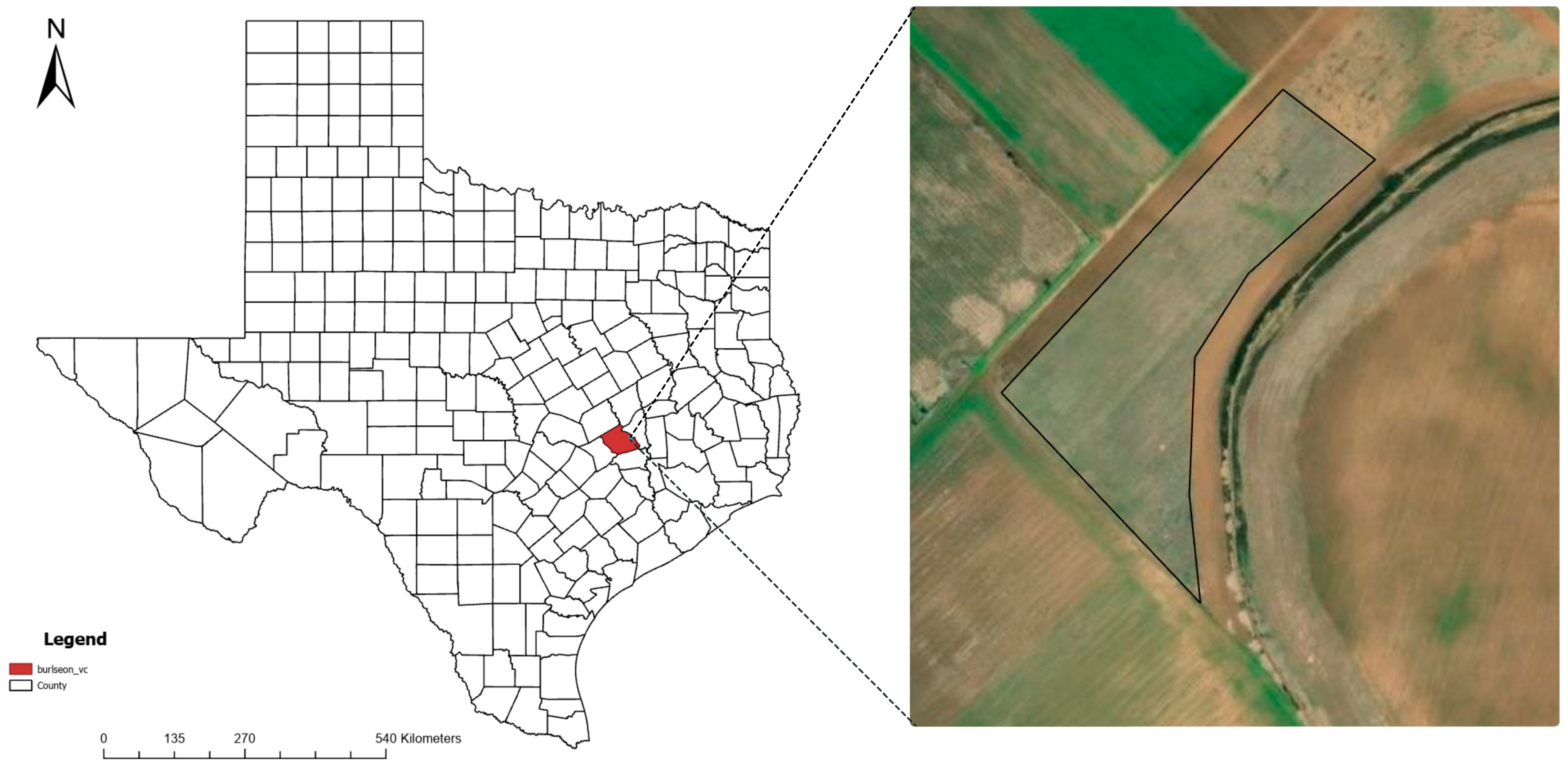


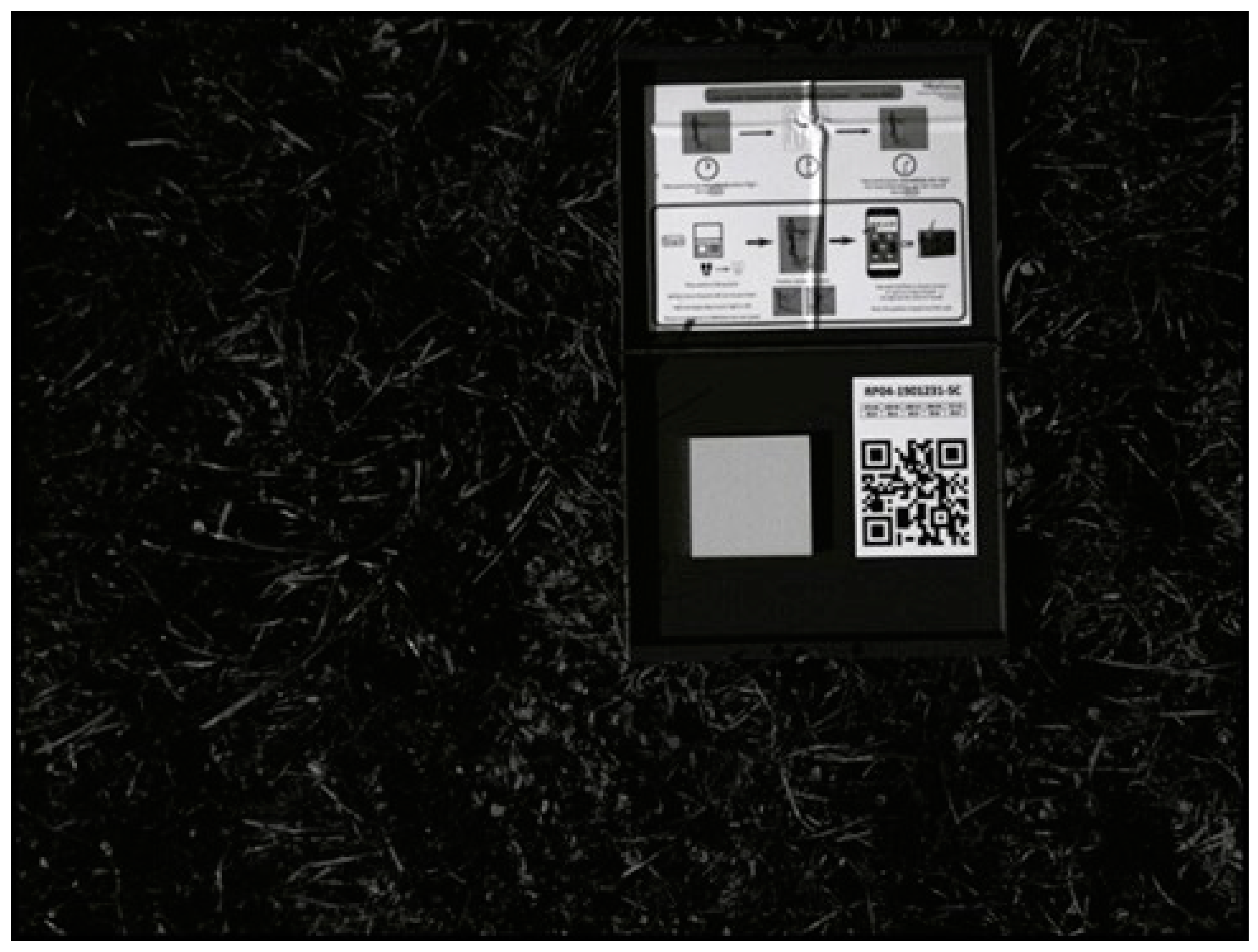

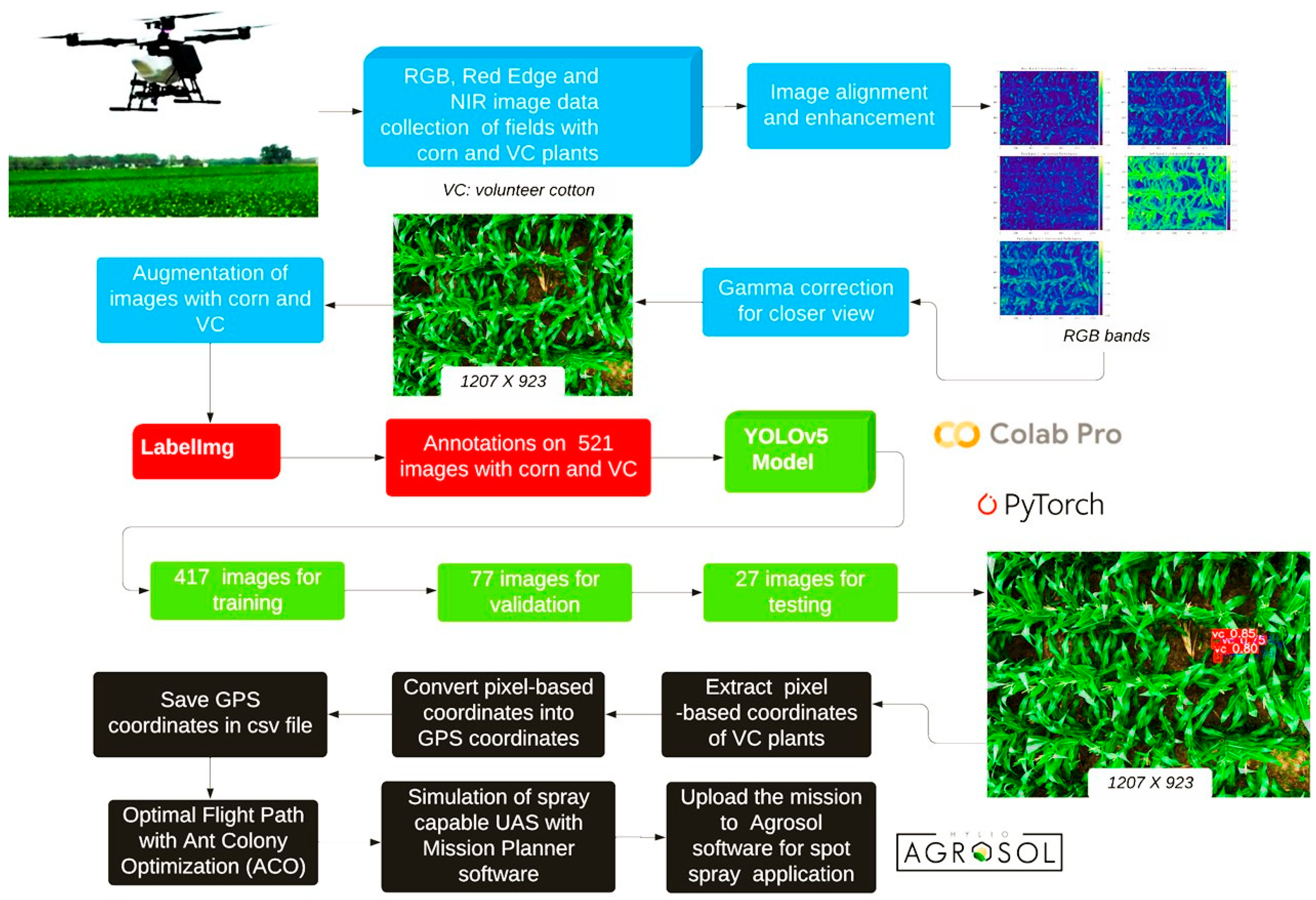
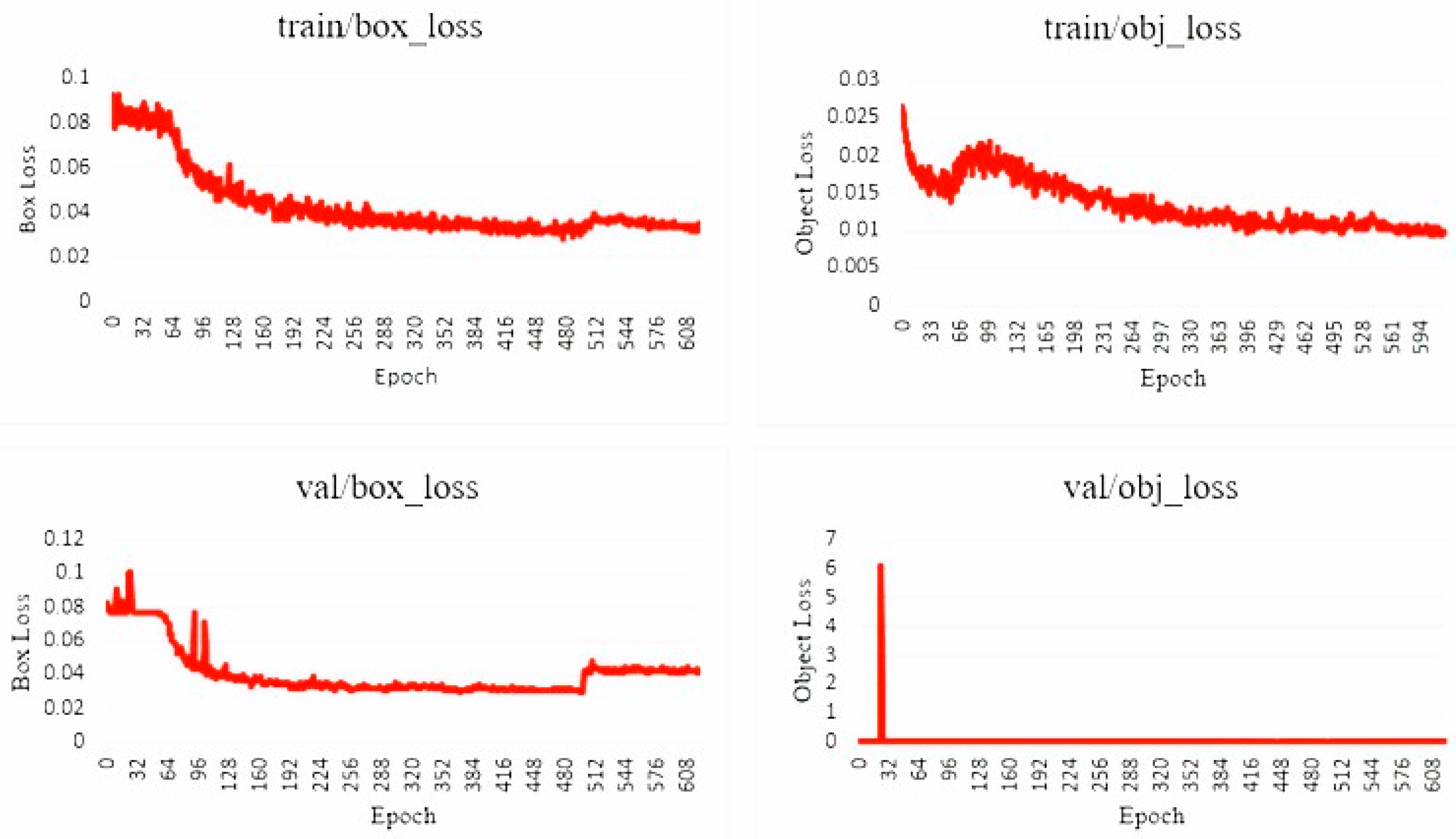
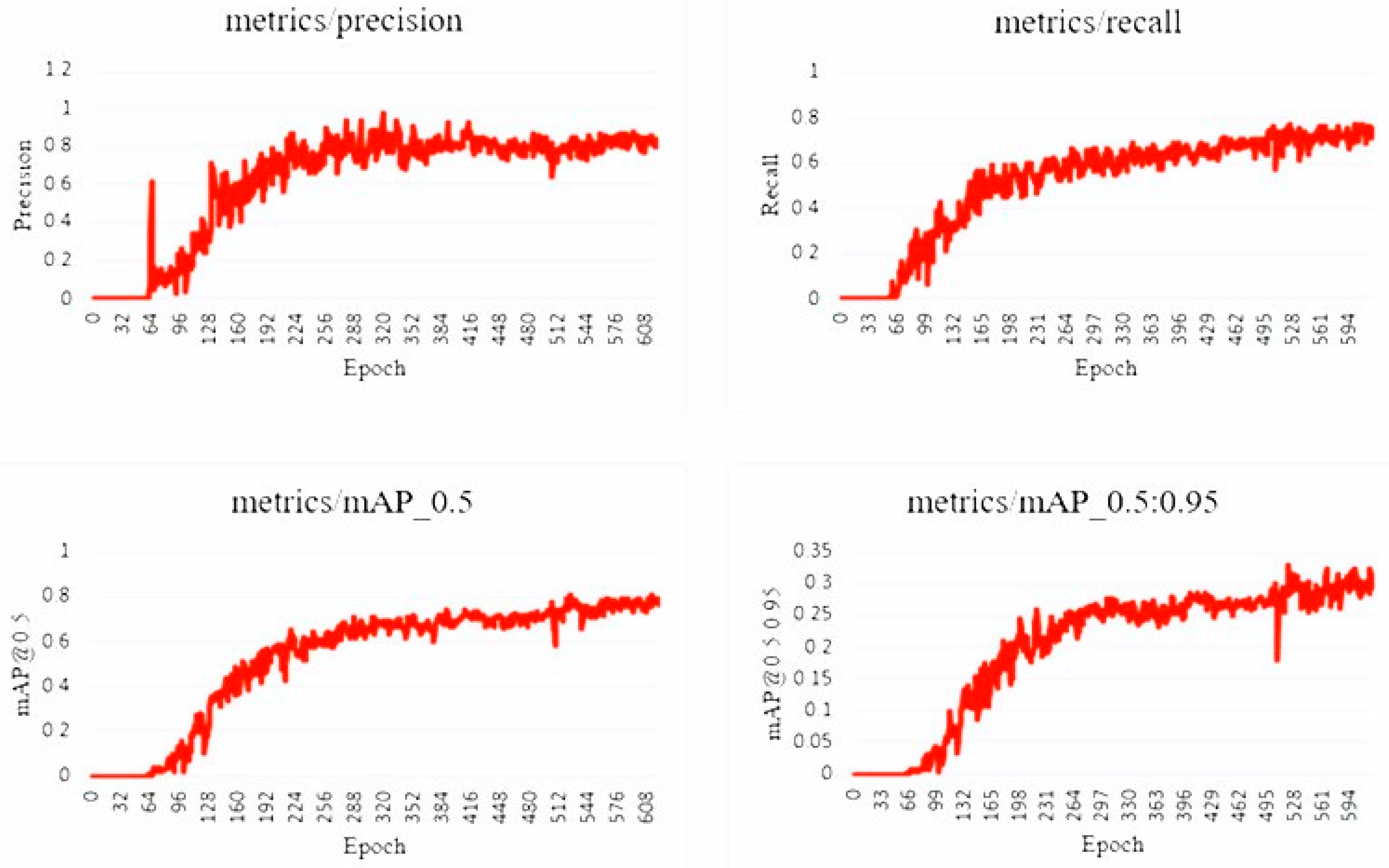
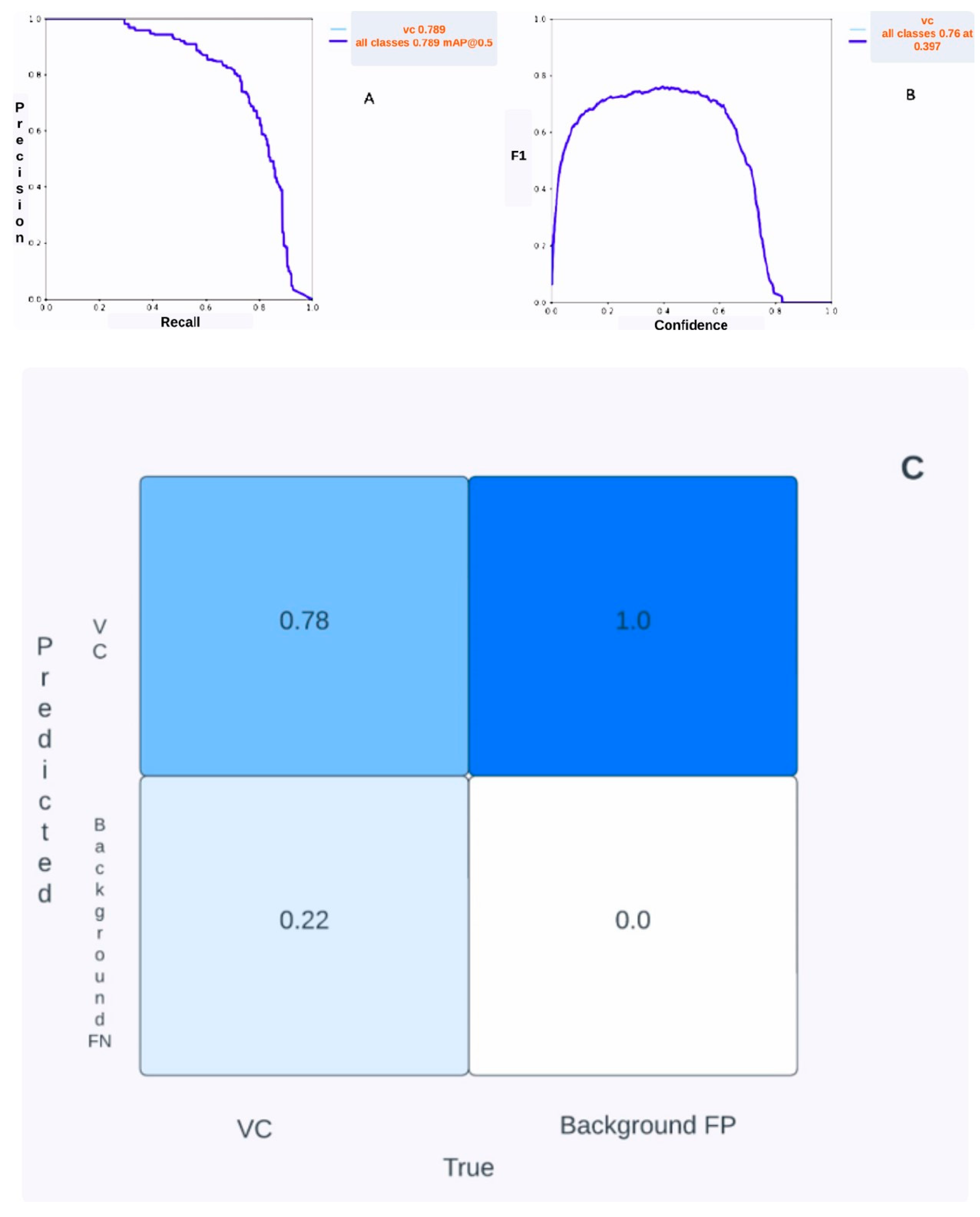
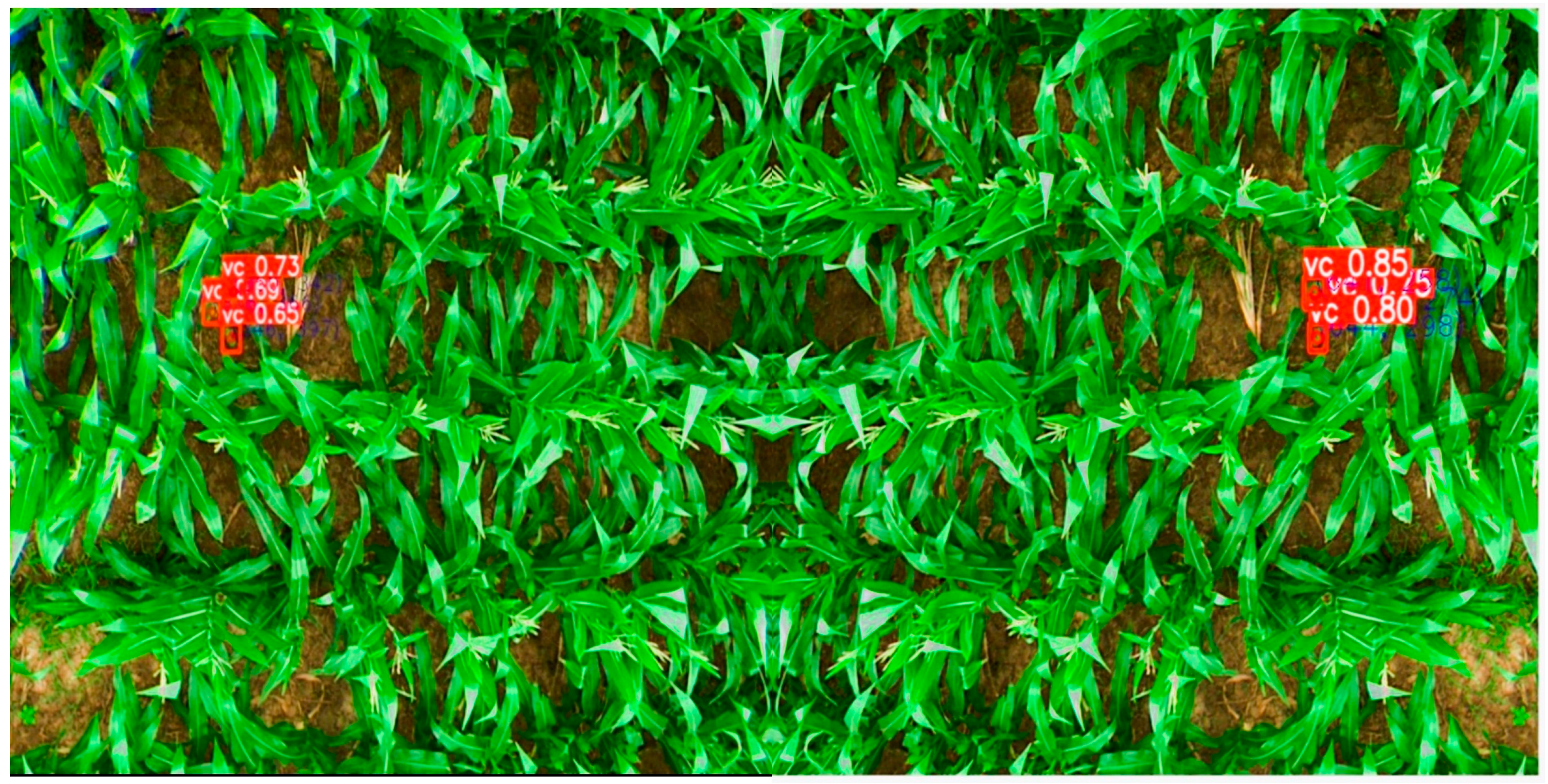




| Spectral Band | Central Wavelength (nm) | FWHM Bandwidth (nm) |
|---|---|---|
| Blue | 475 | 20 |
| Green | 560 | 20 |
| Red | 668 | 10 |
| NIR | 840 | 40 |
| RedEdge | 717 | 10 |
| VC | Latitudes | Longitudes | Nodes | Latitudes | Longitudes | |
|---|---|---|---|---|---|---|
| 1. | 30.5343 | −96.4312 | 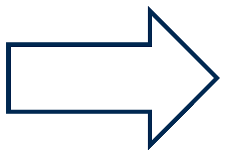 ACO | 1. | 30.53687 | −96.4284 |
| 2. | 30.53431 | −96.4301 | 2. | 30.5359 | −96.4283 | |
| 3. | 30.53492 | −96.4303 | 3. | 30.53321 | −96.4298 | |
| 4. | 30.53386 | −96.4299 | 4. | 30.53386 | −96.4299 | |
| 5. | 30.53531 | −96.4289 | 5. | 30.53431 | −96.4301 | |
| 6. | 30.53484 | −96.4299 | 6. | 30.53492 | −96.4303 | |
| 7. | 30.53687 | −96.4284 | 7. | 30.5343 | −96.4312 | |
| 8. | 30.53537 | −96.4289 | 8. | 30.53484 | −96.4299 | |
| 9. | 30.5359 | −96.4283 | 9. | 30.53537 | −96.4289 | |
| 10. | 30.53321 | −96.4298 | 10. | 30.53531 | −96.4289 | |
| 11. | 30.53687 | −96.4284 | ||||
Disclaimer/Publisher’s Note: The statements, opinions and data contained in all publications are solely those of the individual author(s) and contributor(s) and not of MDPI and/or the editor(s). MDPI and/or the editor(s) disclaim responsibility for any injury to people or property resulting from any ideas, methods, instructions or products referred to in the content. |
© 2024 by the authors. Licensee MDPI, Basel, Switzerland. This article is an open access article distributed under the terms and conditions of the Creative Commons Attribution (CC BY) license (https://creativecommons.org/licenses/by/4.0/).
Share and Cite
Yadav, P.K.; Thomasson, J.A.; Hardin, R.; Searcy, S.W.; Braga-Neto, U.; Popescu, S.C.; Rodriguez, R., III; Martin, D.E.; Enciso, J. AI-Driven Computer Vision Detection of Cotton in Corn Fields Using UAS Remote Sensing Data and Spot-Spray Application. Remote Sens. 2024, 16, 2754. https://doi.org/10.3390/rs16152754
Yadav PK, Thomasson JA, Hardin R, Searcy SW, Braga-Neto U, Popescu SC, Rodriguez R III, Martin DE, Enciso J. AI-Driven Computer Vision Detection of Cotton in Corn Fields Using UAS Remote Sensing Data and Spot-Spray Application. Remote Sensing. 2024; 16(15):2754. https://doi.org/10.3390/rs16152754
Chicago/Turabian StyleYadav, Pappu Kumar, J. Alex Thomasson, Robert Hardin, Stephen W. Searcy, Ulisses Braga-Neto, Sorin C. Popescu, Roberto Rodriguez, III, Daniel E. Martin, and Juan Enciso. 2024. "AI-Driven Computer Vision Detection of Cotton in Corn Fields Using UAS Remote Sensing Data and Spot-Spray Application" Remote Sensing 16, no. 15: 2754. https://doi.org/10.3390/rs16152754
APA StyleYadav, P. K., Thomasson, J. A., Hardin, R., Searcy, S. W., Braga-Neto, U., Popescu, S. C., Rodriguez, R., III, Martin, D. E., & Enciso, J. (2024). AI-Driven Computer Vision Detection of Cotton in Corn Fields Using UAS Remote Sensing Data and Spot-Spray Application. Remote Sensing, 16(15), 2754. https://doi.org/10.3390/rs16152754







